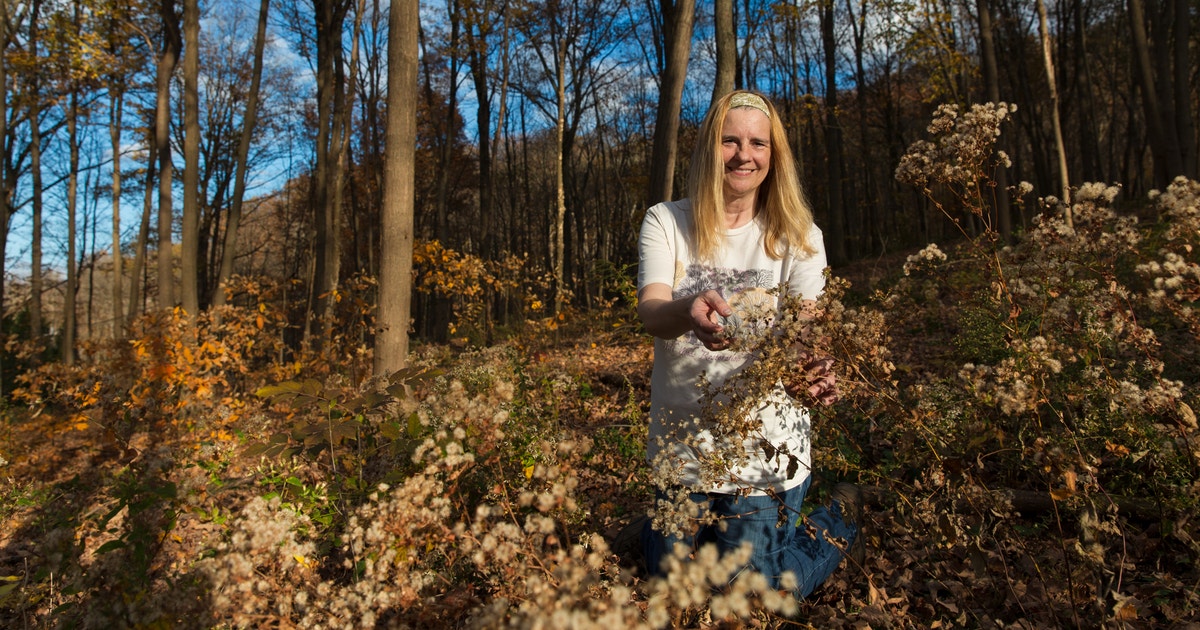Last year 32 native grass seedlings spent the summer on Francesca Calarco’s apartment balcony in Ossining, New York. Under her watchful eye, all but a few survived drought and violent storms. In the fall, Calarco got her hands dirty helping to plant them as part of a habitat improvement project at a nearby state park. “I can even go say hi to them again,” she says.
Calarco is one of more than 200 volunteers with Wild Woods Restoration Project, a nonprofit that trains participants to collect wild seeds from local populations to help rebuild native plant communities. In a distinctive twist, many volunteers care for plants at their own homes—an approach that deepens their commitment to the effort, says founder and president Linda Rohleder: “They get attached to those plants and want the project to succeed.”
Since 2022, volunteers have grown more than 30,000 plants from seeds collected from the wild in the lower Hudson Valley and northern New Jersey. They also help to install those seedlings in parks and preserves. “It’s a relief to have such a pragmatic way to help,” says Sian Roberts, who has volunteered for a little over a year. “There’s something profoundly meditative and soothing about working with seedlings that will be planted for the purpose of ecological repair. My climate despair gets a brief reprieve.”
The group has a particular focus on growing species that make up the understory of the region’s forests. These plants, such as white wood aster and mapleleaf viburnum, provide important habitat for wildlife, including the Ovenbird, Wood Thrush, and Veery. Across the East, densely populated white-tailed deer have decimated the understory, allowing invasive plants to crowd out these native species. A study last year from the National Park Service found that most forests in eastern national parks are at risk from these twin threats.
To give the plants they grow the best chance of thriving in the wild, Rohleder’s group collects seeds only from populations that have adapted to the region. Doing so helps to preserve genetic diversity, which enables plant populations to adapt to diseases, pests, climate change, and other environmental stressors. They follow a slightly modified version of the U.S. Bureau of Land Management’s Seeds of Success protocol, which requires seeds to be taken from healthy populations in quantities that won’t harm future seed generation and from plants throughout those populations to ensure genetic diversity.
Collecting their own seeds also allows Rohleder’s group to sidestep a nationwide problem: As demand for locally adapted seed has grown—driven in part by a growing federal push to restore native habitat degraded by wildfire, development, and climate change—a supply crunch has become a major barrier to ecological restoration.
To help ease the shortage, a 2023 report from the National Academies of Sciences, Engineering, and Medicine recommended building regional partnerships and programs to collect, produce, and bank native seed for specific regions. Groups like Wild Woods can play an important role in that effort, says Uli Lorimer, director of horticulture for the Native Plant Trust. “Linda’s project is a good model for getting people involved in the entire restoration cycle, from collecting seed and growing plants to planting the plants, keeping in mind genetic diversity,” Lorimer says.
As another fall approaches, Wild Woods volunteers are preparing to restore parks and preserves, with high hopes for the plants they carefully tended through the summer. “I’m hoping that by volunteering for projects like this,” says program participant Doug Mancinelli, “there will still be local natural forests for my children and grandchildren to enjoy.”
A version of this piece originally ran in the Fall 2024 issue as “Home Grown.” To receive our print magazine, become a member by making a donation today.

